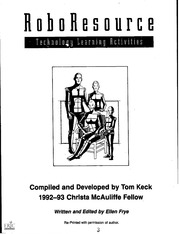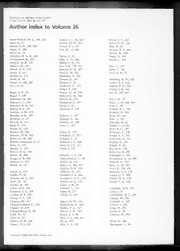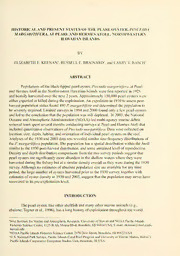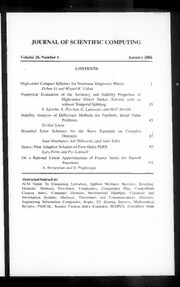
Canadian electrical code 2010 Québec construction code, Chapter V: Electricity Canadian electrical code, part I PDF
Preview Canadian electrical code 2010 Québec construction code, Chapter V: Electricity Canadian electrical code, part I
C22.10-10 Québec Construction Code, Chapter V — Electricity Canadian Electrical Code, Part I with Québec Amendments 2010 C22.10-10 Québec Construction Code, Chapter V — Electricity Canadian Electrical Code, Part I (Twenty-first Edition) with Québec Amendments © Régie du bâtiment du Québec Preamble Under Order in Council 961-2002 dated August 21st, 2002, the Government approved the Québec Construction Code, Chapter V — Electricity which came into force on October 1st, 2002. By the Regulation amending the Construction Code (Order in Council 1385-2003 of December 17th, 2003), the Government subsequently approved the Canadian Electrical Code, Part I (Nineteenth Edition), with the applicable Québec amendments. That Code had replaced the Eighteenth Edition and had come into force on March 29th, 2004. By the Regulation amending the Construction Code (Order in Council 577-2007 of June 27th, 2007), the Government subsequently approved the Canadian Electrical Code, Part I (Twentieth Edition), with the applicable Québec amendments. That Code had replaced the Nineteenth Edition and had come into force on November 5th, 2007. By the Regulation amending the Construction Code (Order in Council 1062-2010 of December 1st, 2010), the Government subsequently approved the Canadian Electrical Code, Part I (Twenty-first Edition), with the applicable Québec amendments. That Code replaces the Twentieth Edition and comes into force on March1st, 2011. Notice This document is a non-official version. Only legal instruments have force of law. A fleur de lys followed by the word “Amended” in the left margin of the Canadian Electrical Code indicates to Québec users that these Rules have been amended for Québec. Note: Some small editorial errors found in the Canadian Electrical Code, including those published in C22.1-09 UpdateNo.1 (July 2010), were corrected in this publication. Canadian Electrical Code — Québec Amendments III Members of the Provincial Consultative Committee on Electricity who collaborated in preparing this edition of the Québec Construction Code, Chapter V — Electricity G. Montminy, Chairman Régie du bâtiment du Québec A. Bisson, Secretary Régie du bâtiment du Québec L. Bélanger Electrical and Electronic Manufacturers Association of Canada J.-P. Boivin CSA International J. Côté Hydro-Québec L. Coulombe Régie du bâtiment du Québec J. Courteau Electrical and Electronic Manufacturers Association of Canada P. Desilets Electro-Federation Canada J.-F. Desmarais Commission de la santé et de la sécurité du travail M. Gauthier International Association of Inspectors in Electricity P. Jean Ordre des ingénieurs du Québec P. Liberatore Corporation des maîtres électriciens du Québec A. Malenfant Ordre des technologues professionnels du Québec C. Pineault Régie du bâtiment du Québec J. Poulin Bell Canada M. Therrien Intertek Testing Services NA ltd G. Trudeau Association des constructeurs-propriétaires en électricité et des électriciens d’entretien du Québec © Régie du bâtiment du Québec IV Canadian Electrical Code — Québec Amendments PART A Construction Code Building Act (R.S.Q., c. B-1.1, ss. 173, 176, 176.1, 178, 179, 185, 1st par., subpars. 3°, 6.2°, 6.3°, 7°, 20°,21°,24°,29°,31°, 36°, 37°, and 38° and s. 192) Chapter V — Electricity Section I Interpretation 5.01 In this Chapter, unless the context indicates otherwise, “Code” means the Code canadien de l’électricité, Première partie, vingt et unième édition, norme CSA C22.1-09 and the Canadian Electrical Code, Part I, Twenty-first edition, CSA C22.1-09, published by the Canadian Standards Association, as well as any subsequent amendments that may be published by that organization. However, any amendments published after 1 October 2002 will apply only to construction work from the date corresponding to the last day of the sixth month following the month in which the French text of those amendments is published. Section II Scope of the Canadian Electrical Code 5.02 Subject to the amendments provided for in this Chapter and to the exemptions provided for by regulation made by the Government under subparagraph 1 of the first paragraph of section 182 of the Building Act (R.S.Q., c. B-1.1), the Code applies to any construction work to an electrical installation as defined in the Code to which the Act applies and which is carried out effective from 1 October 2002. Section III Amendments to the Code 5.03 Any reference in the Code to the NBC (National Building Code) is a reference to the Code specified in Chapter I of the Construction Code, as amended by Division III of this Chapter. 5.03.01 Electrical installation. Any installation of any wiring in or upon any land or in a building from the point or points where electric power or energy is delivered therein or thereon by the supply authority or from any other source of supply, to the point or points where such power or energy can be used therein or thereon by any electrical equipment and shall include the connection of any such wiring with any of the said equipment (see Appendix B). 5.04 The Code is amended (see PART B). Section IV Penal provision 5.05 Any infringement of one of the provisions of this Chapter, except for Rule 2-008 introduced by paragraph 5° of section 5.04 of this Chapter, is an offence. © Régie du bâtiment du Québec Canadian Electrical Code — Québec Amendments V PART B Québec Amendments Section 0 Object By replacing the second paragraph by the following: The requirements in this Code address the fundamental principles of protection for safety contained in Section 131 of International Electrotechnical Commission Standard 60364-1, Electrical Installations of Buildings. IEC 60364-1, Section 131, contains fundamental principles of protection for safety that encompass protection against electric shock, thermal effects, overcurrent, fault currents, and overvoltage. Therefore, compliance with the requirements of this Code and proper maintenance will ensure an essentially safe installation. Scope Deleted Connecting point Before the definition Connector, insert the following: Connecting point — the point at which the consumer’s service entrance is connected to the distributor’s supply (see Appendix B). Current-permit Deleted Electrical installation Deleted Permit Deleted Section 2 2-000 Deleted 2-004 Replaced by the following: 2-004 Declaration of work (1) An electrical contractor or owner-builder shall declare the construction work carried out to which the Chapter V of the Construction Code applies to the Régie du bâtiment du Québec, except work specified in an application for a connection made to a public electricity distribution undertaking, or work of a power not exceeding 10 kW that does not require the replacement or addition of wiring. (2) The declaration shall contain the following information: (a) the address of the work site; (b) the name, address and telephone number of the person for whom the work is carried out; (c) the name, address, telephone number and licence number of the electrical contractor or owner-builder; (d) the dates scheduled for the beginning and end of the construction work; (e) the nature and type of work, in particular the specific kind of work and a description of the powers to be installed; (f) the use of the building or installation and the number of stories and dwellings in the building. (3) The declaration shall be made on the form provided for that purpose by the Board or on any other document containing the information required by Subrule (2). (4) The declaration shall be sent to the Board not later than the twentieth day of the month following the date on which the work begins. 2-006 Deleted © Régie du bâtiment du Québec VI Canadian Electrical Code — Québec Amendments 2-008 Replaced by the following: 2-008 Levies and fees* (1) The levy which every electrical contractor shall pay annually to the Régie du bâtiment du Québec is $702.77 plus an amount corresponding to 2.5% of the contractor’s payroll. (2) For the purposes of this Rule, “payroll” means the total of payments made, before deductions, to journeymen and apprentice electricians carrying out construction work on an electrical installation, including hourly or piece-work wages, commissions, bonuses, pay for leave and any other form of remuneration. The payments made annually to a journeyman or apprentice electrician by an electrical contractor are presumed to be made to a person assigned to construction work on an electrical installation. (3) The following payments are not included in the payroll: (a) payments to a person who qualifies an electrical contractor for the issue of a licence because of his or her technical knowledge; (b) payments for construction work on an electrical installation at a hydroelectric power station at the time of the original construction. (4) An electrical contractor renting the services of journeymen or apprentice electricians through a third party that does not hold a licence shall include the cost of those services in calculating the payroll. (5) A journeyman or apprentice electrician who is a partner in a partnership is, for calculation of the payroll, presumed to receive annual wages of $33 080.99 for the electrical installation work he or she carries out for the partnership. (6) The fixed amount of the levy to be paid under Subrule (1) is established in proportion to the number of months for which the licence is valid, a part of a month being considered a full month. (7) In the case of voluntary abandon of a holder’s licence, the validity period of the licence is deemed to have ended on the date on which the Board received a notice to that effect. (8) An electrical contractor shall pay the levy under this Rule to the Board not later than: (a) 31 May for a payroll calculated for the period from 1 January to 31 March of the current year; (b) 31 August for a payroll calculated for the period from 1 April to 30 June of the current year; (c) 30 November for a payroll calculated for the period from 1 July to 30 September of the current year; (d) 28 February for a payroll calculated for the period from 1 October to 31 December of the preceding year. (9) Each payment shall also include the applicable portion of the fixed amount of the levy. An electrical contractor shall provide with each payment a written statement indicating the portion of the payroll applicable to each journeyman or apprentice electrician identified by name. If a licence is issued to the electrical contractor during the year, the first statement and the first payment shall be made on the first date in Subrule (8) that is at least two months after the issue of the licence. (10) If an electrical contractor fails to send the statement required under this Rule to the Board, or if the Board has reason to believe that the statement is inaccurate, the Board shall make an estimate of the contractor’s payroll. In such a case, it is the contractor’s responsibility to demonstrate that the estimate is inaccurate. (11) If it is established that an electrical contractor’s payroll differs from the amount used to establish the levy, the Board shall bill or credit, as the case may be, an amount equal to the difference between the amount levied and the amount calculated according to the actual payroll. (12) The levy that an electrical owner-builder shall pay annually to the Board in accordance with Subrule (8) is $527.09, plus inspection fees of $139.39 for the first hour of inspection or fraction thereof and half that rate for each half-hour or fraction thereof of inspection in addition to the first hour; an amount of $65.58 for each trip related to the inspection shall be added to those fees. © Régie du bâtiment du Québec Canadian Electrical Code — Québec Amendments VII (13) For approval of electrical equipment referred to in Rule 2-024 or 2-026 that is not already approved by an organization mentioned in Subrule (2)-028(1), approval fees are $139.39 for the first hour of approval or fraction thereof and half that rate for each half-hour of approval or fraction thereof in addition to the first hour; an amount of $65.58 for each trip related to the approval and $8.20 for each approval mark affixed by the Board shall be added to those fees. (14) The fees payable under Subrules (12) and (13) shall be paid not later than 30 days after the billing date. *Note: All the amounts indicated in the section are the amounts valid for the year 2010. The Board publishes the amounts indexed each year in the Gazette Officielle du Québec, according to the indexations provided for in section 153 of the Building Act. The notices of indexation are also available on the Board’s website. 2-010 and 2-012 Deleted 2-014 Replaced by the following: 2-014 Plans and specifications (1) An electrical contractor or owner-builder shall not start construction work on an electrical installation to which Chapter V of the Construction Code applies unless plans and specifications have been prepared for the work if the installation requires a service line exceeding 200 kW. (2) The plans and specifications referred to in Subrule (1) shall contain the following information: (a) Name and address of the person responsible for preparing them; (b) Type of building or electrical installation and the location of the work; (c) Location of the service line and distribution; (d) The supply voltage and the single-line diagram of the service line and distribution; (e) Loads, protection characteristics and identification of the feeder and branch circuits at their respective panelboards; (f) Rated power of each apparatus; (g) Type and size of raceways to be used; (h) Number and characteristics of conductors used in the raceways; (i) Cable characteristics; (j) Type of materials, accessories or apparatus installed in hazardous locations; (k) Size and location of grounding conductors; (l) A description of all underground parts of the installation; (m) For an addition to an existing electrical installation, all information on the part of the installation on which work is to be carried out and a list of the existing loads or of the maximum demand loads of the existing installation recorded for the last 12 months; (n) For an electrical installation exceeding 750 volts, the vertical and horizontal clearances of live parts and a description of the grounding and mechanical protection of live parts. 2-016 to 2-020 Deleted 2-024 to 2-028 Replaced by the following: 2-024 Approval of electrical equipment used in an electrical installation or intended to consume energy from an electrical installation (1) The selling or renting of electrical equipment that has not been approved is prohibited. (2) All electrical equipment used in an electrical installation shall be approved for the use for which it is intended. In addition, the use of electrical equipment that has not been approved in an electrical installation or the permanent connection of such equipment to such an installation is prohibited. However, for purposes of a test, exhibition, presentation or demonstration, electrical equipment shall be permitted to be used without being © Régie du bâtiment du Québec VIII Canadian Electrical Code — Québec Amendments approved if a notice containing the following warning in letters at least 15 mm high is posted: “NOTICE: This electrical equipment has not been approved for sale or rental as required by Chapter V of the Construction Code”. (3) This Rule does not apply to electrical equipment of a power not exceeding 100volt-amperes and of a voltage not exceeding 30 volts, with the exception of luminaires, thermostats with heat anticipators, electromedical devices and apparatus installed in a hazardous location. 2-026 Approval of a prefabricated building A prefabricated building in which the electrical installation work was not carried out by an electrical contractor shall not be sold, rented, exchanged or acquired unless it has been approved. 2-028 Mark of approval (1) Electrical equipment or a prefabricated building that has received certification by one of the following organizations is considered to be approved: (a) CSA International (CSA) (b) Curtis-Strauss LLC (cCS); (c) FM Approvals (cFM); (d) IAPMO Research and Testing Inc. (cIAPMO, cUPC or cUSPC); (e) Labtest Certification Inc. (cLC); (f) Underwriters’ Laboratories of Canada (ULC); (g) Intertek Testing Services NA Ltd (WH, cETL); (h) MET Laboratories, Inc. (cMET); (i) Nemko Canada Inc. (cNemko); (j) NSF International (cNSF); (k) OMNI-Test Laboratories, Inc. (cO-TL); (l) QPS Evaluation Services, Inc. (cQPS); (m) Quality Auditing Institute, Ltd (cQAI); (n) TÜV SÜD America Inc. (cTÜV Product Service); (o) TUV Rheinland of North America Inc. (cTUV); (p) Underwriters’ Laboratories Inc. (cUL); (q) Any other certification organization accredited by the Standards Council of Canada that has notified* the Board of its accreditation and whose certification seal or label attests to compliance with Canadian standards. (2) Electrical equipment bearing the label of an organization accredited by the Standards Council of Canada that has notified* the Board of its accreditation attesting that, without being certified by an organization listed in Subrule (1), the equipment is recognized as complying with the requirements of Standard SPE-1000-99 Model Code for the Field Evaluation of Electrical Equipment or complying with the requirements of Standard C22.2 nº 125-M1984 Équipement électromédical and Standard C22.2 No. 125-M1984 Electromedical Equipment, published by the Canadian Standards Association, as amended or republished by that organization, is also considered to be approved. (3) Notwithstanding Subrules (1) and (2), approval is not required for each of the components of electrical equipment if the equipment has received an overall approval. *Note: To obtain an updated list of the recognized bodies, visit the Board's website. 2-322 Replaced by the following: 2-322 Electrical equipment in the vicinity of a venting or relief discharge for combustible gas (see Appendix B) (1) Arc-producing electrical equipment shall be installed at least 3 m from the discharge of a combustible gas relief device or vent. (2) Notwithstanding Subrule (1), in the case of natural gas, the distance allowed shall be permitted to be 1 m. © Régie du bâtiment du Québec
The list of books you might like

$100m Offers

Mind Management, Not Time Management

Atomic Habits James Clear

What Happened to You?

By Magic Alone
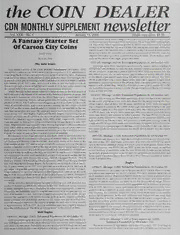
The Coin Dealer Newsletter Monthly Supplement Newsletter: 2006

Lie coalgebras and rational homotopy theory, I: Graph coalgebras
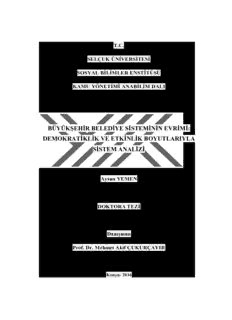
büyükşehir belediye sisteminin evrimi
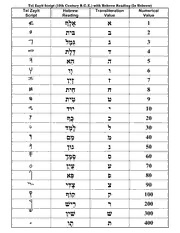
Tel Zayit Script (10th Century B.C.E.) with Hebrew Reading (In Hebrew)

Applied Reinforcement Learning with Python: With OpenAI Gym, Tensorflow, and Keras

Deep Learning with R
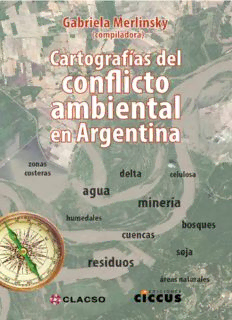
CARTOGRAFÍAS DEL CONFLICTO AMBIENTAL EN ARGENTINA

CA Clarity PPM Accelerator for the PMBOK Product Guide - On

Die Passivlegitimation im Arzthaftpflichtprozeß: Unter Berücksichtigung der Organisation der Krankenversorgung

Greek Government Gazette: Part 2, 1993 no. 465
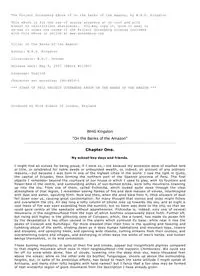
On the Banks of the Amazon by WHG Kingston

On the Method of Zadig by Thomas Henry Huxley

La Négation : domaine anglais
